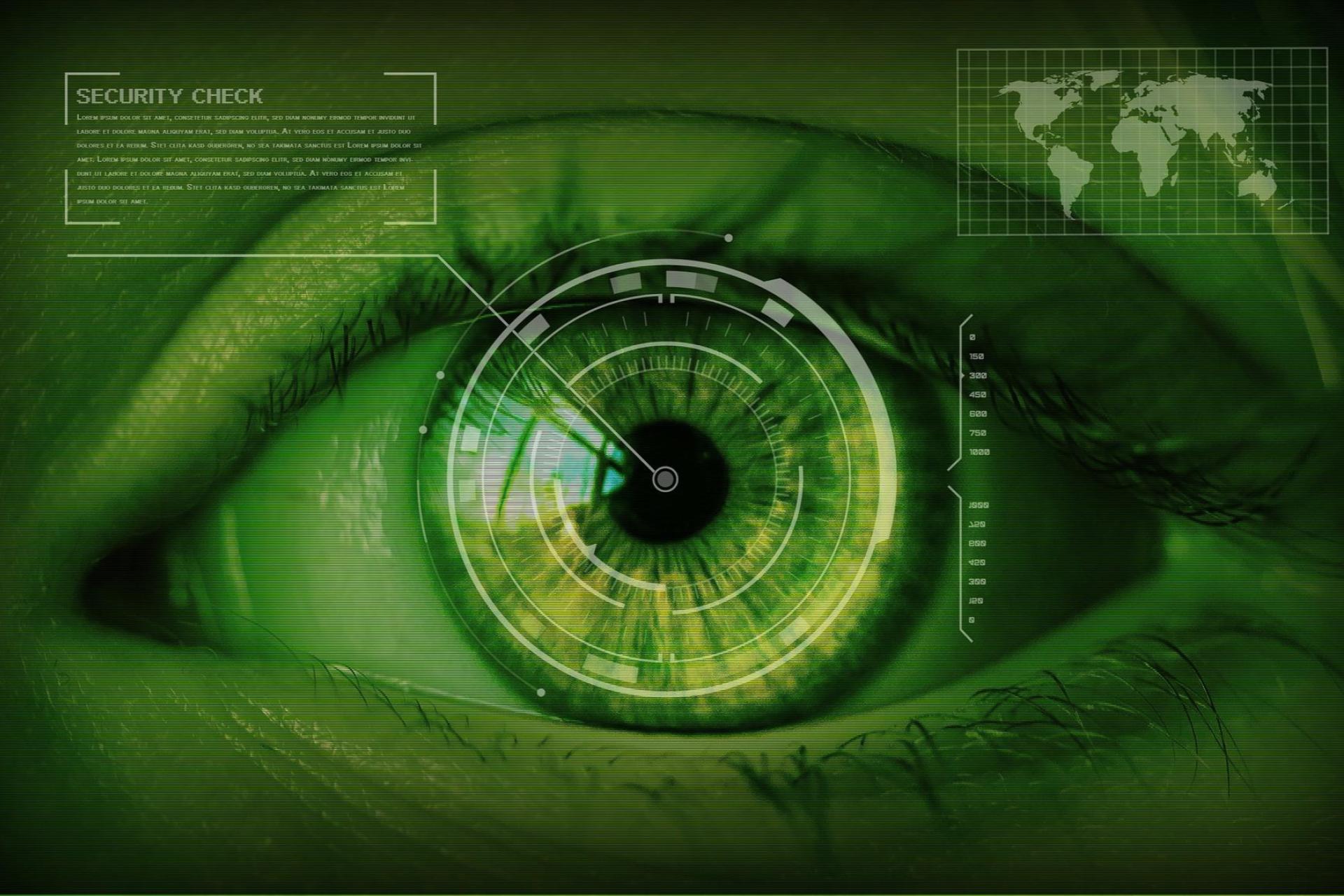HLS.Today – Homeland security, public safety, intelligence, and cybersecurity are all critical components of a country’s overall security infrastructure. In this article, we will explore the various systems, products, solutions, deployments, and strategies used in these fields, and how they work together to keep our nation’s safe.
First, let’s start with homeland security. This is the set of measures taken by a government to ensure the safety and security of its citizens and critical infrastructure within its borders. This can include a wide range of activities, from border security and immigration control to disaster response and emergency management.
One of the key systems used in homeland security is surveillance. This can include everything from CCTV cameras and biometric scanners at airports and border crossings, to satellite imagery and data analytics to track potential threats. Other technologies used in homeland security include communication systems, such as radio networks and satellite phones, as well as transportation systems, like trains and buses, to help move people and goods around the country safely.
In addition to these systems, there are also a range of products used in homeland security. These can include everything from personal protective equipment, such as bulletproof vests and gas masks, to advanced technology like drones and robot dogs. These products help security personnel to detect, deter, and respond to potential threats, as well as provide them with the tools they need to do their jobs effectively.
Solutions
In terms of solutions, homeland security agencies often work with private companies to develop new technologies and approaches to address emerging threats. For example, companies may develop algorithms to analyze large amounts of data, or design new software to help track and intercept potential threats. These solutions can be integrated into existing systems, or used as standalone tools, depending on the specific needs of the agency.
Deployment
Once these systems, products, and solutions have been developed, they need to be deployed in the field. This can involve everything from installing surveillance cameras and communication systems at airports and border crossings, to training security personnel on how to use the latest technology. In some cases, these deployments may be done on a national level, while in others they may be focused on specific regions or critical infrastructure.
Law Enforcement
Law enforcement and tactical task force teams play a critical role in ensuring public safety and security. These teams are responsible for responding to a wide range of situations, from routine patrol and traffic enforcement, to high-risk situations such as active shooter incidents and hostage situations. To do their jobs effectively, these teams rely on a range of products and solutions.
One of the key products used by law enforcement and tactical task force teams is personal protective equipment (PPE). This can include everything from bulletproof vests and helmets, to gas masks and body cameras. PPE helps to protect officers from harm, and can also provide them with the tools they need to do their jobs, such as recording equipment or communication devices.
Another important product used by these teams is weapons and ammunition. Law enforcement officers may carry a range of weapons, from handguns and shotguns, to non-lethal options such as pepper spray and tasers. Tactical task force teams may also have access to more specialized weapons, such as assault rifles and explosives. Proper training and handling of these weapons is essential to ensure safety and effectiveness.
In addition to PPE and weapons, law enforcement and tactical task force teams also use a range of vehicles and equipment. This can include everything from police cars and motorcycles, to armored vehicles and helicopters. These vehicles provide officers with the mobility and capabilities they need to respond to various situations, and may be equipped with specialized features such as sirens and flashing lights.
In terms of solutions armed forces, law enforcement and tactical task force teams may use a range of technology to help them do their jobs. This can include everything from body cameras and video surveillance, to facial recognition and data analytics. These technologies can help officers to gather and analyze information, as well as provide them with real-time updates and alerts.
Another key solution used by these teams is training and exercises. Regular training helps to ensure that officers are prepared to handle a wide range of situations, and can help to improve their skills and effectiveness. Tactical task force teams may also conduct specialized training, such as hostage negotiation or active shooter response. Exercises can also be useful in testing and refining response plans and procedures.
Overall, law enforcement and tactical task force teams rely on a range of products and solutions to do their jobs effectively. From personal protective equipment and weapons, to vehicles and technology, these tools and resources help to keep our communities safe and secure. By staying on the cutting edge of technology and regularly training and practicing, these teams are able to respond to a wide range of threats and emergencies.
Finally, it’s important to have a clear strategy in place to guide all of these efforts. This can include setting goals and objectives, identifying priorities, and developing plans to allocate resources and personnel effectively. It’s also important to regularly review and assess these strategies to make sure they are still effective, and to adapt as needed to changing circumstances.
Homeland Security Patriot Act
The Patriot Act is a law enacted by the United States Congress in response to the September 11, 2001 attacks. It is part of the broader framework of the Department of Homeland Security and its primary purpose is to enhance the ability of U.S. law enforcement agencies to detect and prevent terrorism. The act expanded the powers of the federal government to investigate and prosecute terrorism, including by granting law enforcement agencies greater surveillance and intelligence-gathering abilities. It also created new offenses related to terrorism and strengthened existing laws to better deal with the threat of terrorism. The act has been controversial and has been the subject of legal challenges and debates over civil liberties.
“Congress passed the USA PATRIOT Act (the Act) in response to the terrorists’ attacks of September 11, 2001. The Act gives federal officials greater authority to track and intercept communications, both for law enforcement and foreign intelligence gathering purposes. It vests the Secretary of the Treasury with regulatory powers to combat corruption of U.S. financial institutions for foreign money laundering purposes. It seeks to further close our borders to foreign terrorists and to detain and remove those within our borders. It creates new crimes, new penalties, and new procedural efficiencies for use against domestic and international terrorists. Although it is not without safeguards, critics contend some of its provisions go too far. Although it grants many of the enhancements sought by the Department of Justice, others are concerned that it does not go far enough.”
Homeland security systems
- Surveillance systems, such as CCTV cameras and biometric scanners.
- Communication systems, such as radio networks and satellite phones.
- Transportation systems, such as trains and buses.
- Border security systems, such as fences and walls.
- Disaster response and emergency management systems.
- Cybersecurity systems, such as firewalls and intrusion detection systems.
- Intelligence gathering and analysis systems.
- Early warning systems for natural disasters and other threats.
- Biological, chemical, and nuclear detection systems.
- Emergency alert systems, such as sirens and alerts on mobile devices.
Homeland security Products
- Personal protective equipment, such as bulletproof vests and gas masks.
- Drones and other unmanned aerial vehicles.
- Robotic dogs for bomb detection and other tasks.
- Portable radiation detectors.
- Thermal imaging cameras.
- Explosive detection systems, such as bomb sniffing dogs and X-ray machines.
- Biometric scanners for identifying individuals.
- Satellite phones for communication in remote areas.
- Night vision goggles.
- Specialized vehicles, such as armored cars and boats.
Homeland security Deployments
- Surveillance systems at airports and border crossings.
- Communication systems in disaster-prone areas.
- Transportation systems to move personnel and equipment during emergencies.
- Border security systems, such as fences and walls.
- Cybersecurity systems to protect critical infrastructure.
- Intelligence gathering and analysis systems to track potential threats.
- Early warning systems in high-risk areas.
- Biological, chemical, and nuclear detection systems in major cities.
- Emergency alert systems to inform the public of potential threats.
- Specialized units, such as bomb squads and SWAT teams, to respond to specific threats.
Homeland security Strategies
- Developing a clear set of goals and objectives to guide homeland security efforts.
- Identifying and prioritizing potential threats.
- Developing plans to allocate resources and personnel effectively.
- Implementing regular training and exercises to ensure readiness.
- Collaborating with other agencies and organizations to share information and resources.
- Engaging in international cooperation and partnerships to address global threats.
- Investing in research and development to stay on the cutting edge of technology.
- Developing contingency plans for various types of emergencies and disasters.
- Regularly reviewing and assessing strategies to ensure they remain effective.
- Engaging in public outreach and education to promote awareness and preparedness.
Public Safety Systems
- Emergency response systems, such as 911 call centers and ambulance services.
- Fire prevention and suppression systems, such as fire alarms and sprinklers.
- Law enforcement systems, such as police departments and criminal justice agencies.
- Traffic control systems, such as traffic lights and road signs.
- Disaster response and emergency management systems.
- Emergency alert systems, such as sirens and alerts on mobile devices.
- Public health systems, such as hospitals and clinics.
- Search and rescue systems, such as helicopters and rescue teams.
- Public transportation systems, such as buses and trains.
- School safety systems, such as security cameras and metal detectors.
Public Safety Products
- Personal protective equipment, such as bulletproof vests and gas masks.
- Firefighting equipment, such as hoses and axes.
- Emergency medical supplies, such as defibrillators and first aid kits.
- Non-lethal weapons, such as pepper spray and tasers.
- Police vehicles, such as cars and motorcycles.
- Traffic control devices, such as cones and barriers.
- Search and rescue equipment, such as ropes and harnesses.
- Public health equipment, such as x-ray machines and lab equipment.
- School safety equipment, such as metal detectors and security cameras.
- Disaster relief supplies, such as tents and blankets.
Public Safety Deployments
- Emergency response systems in major cities.
- Fire prevention and suppression systems in public buildings and homes.
- Law enforcement personnel in high-crime areas.
- Traffic control systems on major roads and highways.
- Disaster response and emergency management teams to areas at risk of natural disasters.
- Emergency alert systems in schools and other public buildings.
- Public health personnel and equipment in underserved areas.
- Search and rescue teams to remote or difficult-to-access areas.
- Public transportation systems to connect communities.
- School safety personnel and equipment in schools and other educational institutions.
Public Safety Strategies
- Developing a clear set of goals and objectives to guide public safety efforts.
- Identifying and prioritizing potential risks and hazards.
- Developing plans to allocate resources and personnel effectively.
- Implementing regular training and exercises to ensure readiness.
- Collaborating with other agencies and organizations to share information and resources.
- Engaging in community outreach and education to promote awareness and preparedness.
- Investing in research and development to stay on the cutting edge of technology.
- Developing contingency plans for various types of emergencies and disasters.
- Regularly reviewing and assessing strategies to ensure they remain effective.
- Engaging in public-private partnerships to leverage additional resources and expertise.
Cybersecurity Strategies
- Developing a cybersecurity spyware, malware protection policy and plan.
- Conducting regular risk assessments and audits.
- Implementing strong password policies and regularly changing passwords.
- Using encryption to protect sensitive data.
- Implementing firewalls and intrusion detection systems.
- Providing regular cybersecurity training and education for employees.
- Regularly patching and updating software and systems.
- Conducting regular backups of data.
- Establishing protocols for responding to cybersecurity incidents.
- Implementing access controls to limit who can access sensitive information.
- Conducting penetration testing to identify vulnerabilities.
- Using two-factor authentication to enhance security.
- Disposing of sensitive data securely.
- Using secure communication channels, such as VPNs.
- Monitoring networks and systems for suspicious activity.
- Implementing security controls on mobile devices and remote access.
- Conducting regular audits of third-party vendors and partners.
- Engaging in international cooperation and information sharing.
- Developing a cybersecurity incident response plan.
- Regularly reviewing and updating cybersecurity policies and procedures.
Detection, sensors, radars, jamming detection
- Metal detectors.
- X-ray machines.
- Thermal imaging cameras.
- Laser scanners.
- C-UAS Laser.
- Radio-frequency identification (RFID) scanners.
- Motion sensors.
- Biometric scanners.
- Chemical and biological detectors.
- Explosive detection systems.
- Gas chromatographs.
- Radar systems.
- Acoustic sensors.
- Global positioning systems (GPS).
- Infrared cameras.
- Drones.
- Magnetic resonance imaging (MRI) machines.
- Ion mobility spectrometers.
- Nuclear radiation detectors.
- Underwater sonar systems.
- Lasers for range finding and targeting.
Counter drone technology
- Jammers.
- Dazzlers.
- Laser barriers.
- Laser netting.
- Laser guns.
- Laser fencing.
- Laser turrets.
- Laser walls.
- Laser drones.
- Portable laser systems.
Conclusion
Homeland security, public safety, intelligence, and cybersecurity are all interrelated fields that are critical to the protection of a nation and its citizens. Homeland security encompasses a wide range of activities, including emergency management, border control, and disaster response, with the goal of protecting the country from threats such as terrorism, natural disasters, and cyber attacks. Public safety involves the prevention of crime and the protection of individuals and communities, often through the work of law enforcement agencies and first responders. Intelligence gathering and analysis is a key aspect of both homeland security and public safety, as it allows authorities to anticipate and mitigate potential threats.
Cybersecurity is a particularly important aspect of homeland security in the modern age, as the increasing reliance on technology has made it a prime target for hackers and other malicious actors. Ensuring the security of critical infrastructure and government systems is essential to protecting the nation from cyber attacks, and requires the cooperation of both the private and public sectors.
Overall, homeland security, public safety, intelligence, and cybersecurity are all critical to the safety and well-being of a nation and its citizens. By working together and leveraging the latest technologies and best practices, authorities can better protect the country from a wide range of threats and ensure a safer and more secure future for all.
Source HLS.Today







